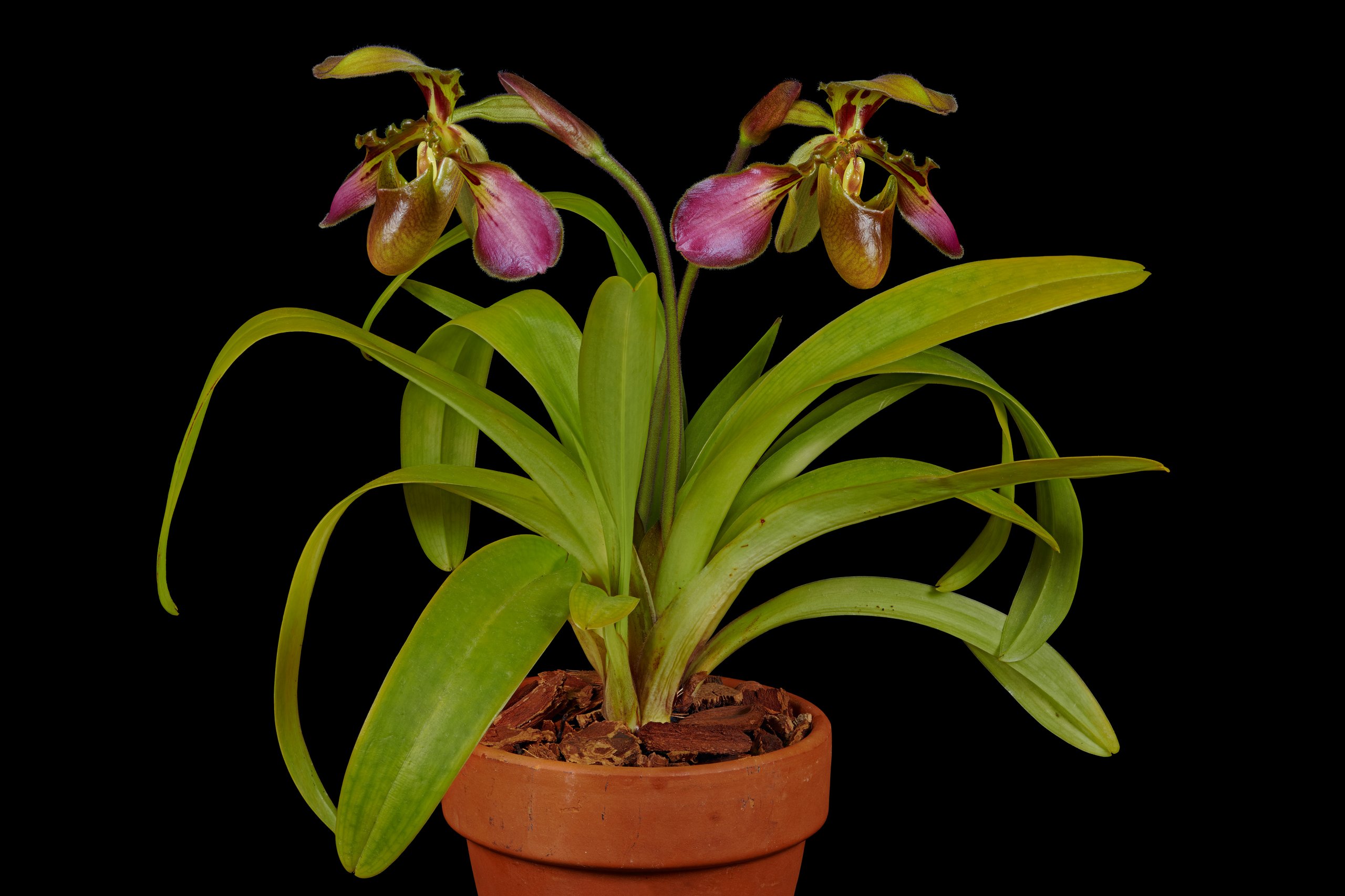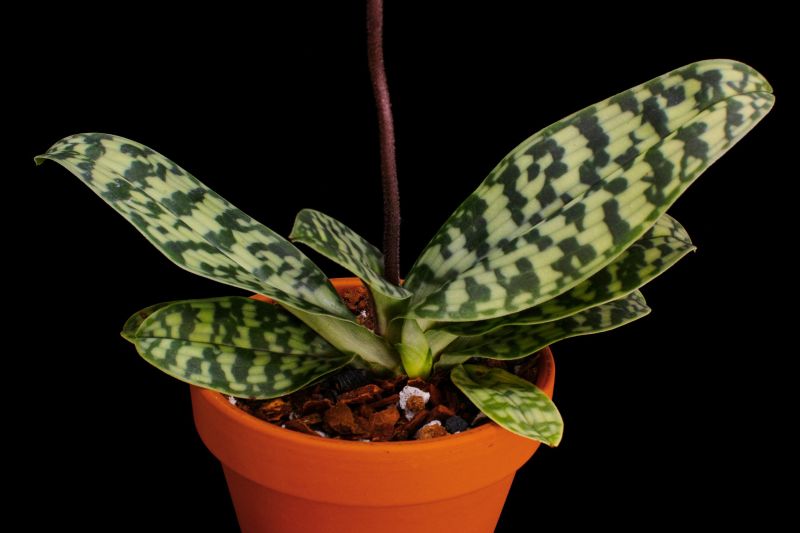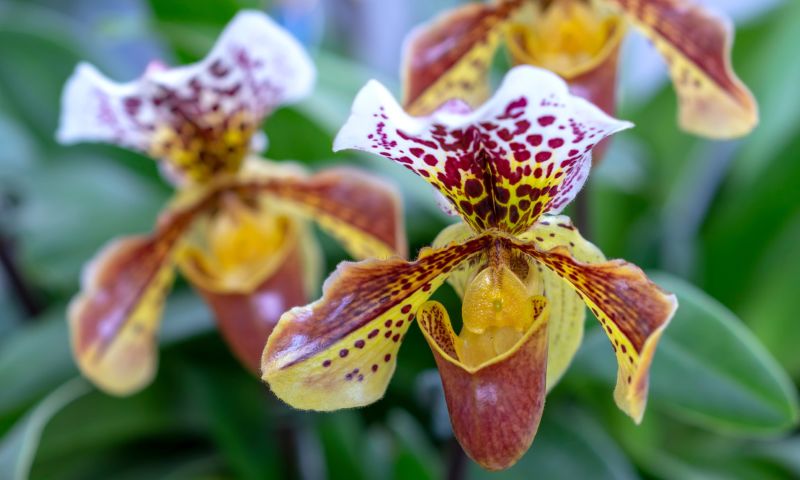
Nuksungla walling
Paphiopedilum (pronounced paf-ee-oh-ped-i-lum) orchids are nicknamed “slipper orchids” because of the unusual shape of their flowers. All Paphiopedilum are characterised by both a cup-like lip called the pouch, which gives them the common name of lady slipper, and a prominent dorsal sepal. There are about 80 species and hundreds of hybrids in the Paphiopedilum genus. Some have striped or variegated leaves, and others have flowers with spots, stripes or patterns. Many of these varieties are prized by collectors. They are also one of the easiest species of orchids to grow.
Growing Lady Slippers: Paphiopedilum or Lady Slippers are one of the easiest species of orchids to grow and can be grown by beginners without any specializes facility. Lady slippers grow best in shaded areas. They should not be kept wet nor should they be watered in such a way that moisture is accumulated in their crowns.
- Temperature
There are two groups of lady slippers in regard to temperature requirements
1. Green leaved or cool growing types which require a night temperature of 10˚C - 13˚C.
2. Mottled leaf or warm loving type which require a night temperature of 18˚C - 20˚C.


In either case, day temperature should not exceed 21˚C to 24˚C. This does not mean that the plants will die when exposed to higher or lower temperature but their growth is adversely affected. This means it is best to avoid sunlight except early in the morning or it could even burn the leaves. In case the day temperature exceeds the optimal limits, regular watering can be done and shade should be provided artificially.
- Watering
Paphiopedilums do not have pseudobulbs and store most of their water in the leaves, so, they must have a regular and constant water supply. Water the plants early in the day so that the foliage will be dry before the temperature drop at nightfall. Plants typically need to be watered every five to seven days but weather conditions may modify this need. For those growers using bark as a potting medium, it is essential not to let the plant dry out completely because bark becomes very difficult to re-wet. Water will channel through the dry medium without wetting the plant or the compost. If this happens submerge the whole pot in a pan of water until moistness and wettability have been restored. In winter and in dry climates, increase the humidity of the air around the plant by misting, using a humidifier, or placing a tray of water nearby. While watering, care should be taken to ensure that excess moisture doesn’t accumulate in the crowns. Wet crowns encourage bacterial and fungal activity which may cause rotting resulting to death of the plant.
- Fertilizer
Lady slippers require little to moderate levels of fertilization. If at all, they need higher levels of Nitrogen (30:10:20 or 30:10:10) at half the strength recommended on the pack. Excess levels of fertilization can also burn the roots and hence it is important to flush with clean water to remove excess fertilizers. If fertilizers are unavailable in the market, vermiwash can be used as an excellent alternative and it also doesn’t have the risk of excess fertilization.
- Potting and Re-potting
The medium in which Lady Slippers grow is basically humus. The medium used for its cultivation must be open, loose and well drained, but moisture retentive, should not be too dense, to allow free circulation of air for the roots. Growth media varies from coarse sand, forest manure, tree bark, sphagnum peat moss etc. To make an ideal growing media, 4 parts bark manure and 1 part perlite is preferable.
Lady slippers have sensitive roots, often few in number. Therefore one must be extremely cautious while taking a plant out of a pot to change the medium or container. Dividing large plants with 6 or more growths is recommended for repotting and multiplying, this can be done by pulling the smaller ones apart or by separating them at the root portion by using a knife. Never divide into single growth plant, letting them fall apart during repotting is a much better alternative. Smaller divisions will grow but may take much longer to bloom. Clean the plant of all the dead roots and pot the plants moderately tight in the pot by pressing the bark all around the plant. Spread the roots to the bottom of the pot and fill the medium so that the junction of the root and stem is half inch deep in the centre of the pot. Do not plant any deeper as this will encourage rot. An average plant should have a pot of 4-6 inches in height. The best time for repotting is early spring or late autumn when the temperatures are mild.
Restrain watering to a minimum until evidence of new growth is apparent but do not neglect the humidity or the plants will dehydrate. Recently repotted Paphiopedilum should be placed in a shady area and moved gradually into the correct light conditions once new growth begins.
Tips: Cleanliness is important. Flower stems should be staked as they elongate, more so with multiple flowered plants so the flowers are spaces correctly and do not try and impede each other. Try not to turn the plant around whilst the stem is elongating as the flowers could face different directions and would not complement each other.






